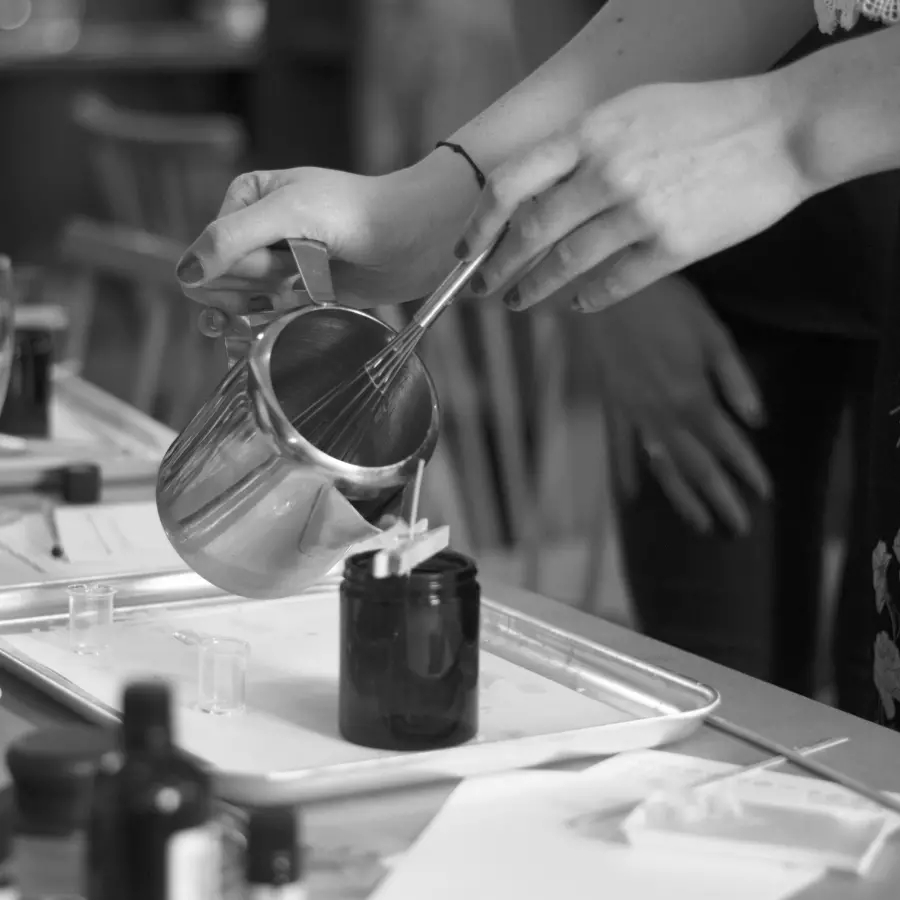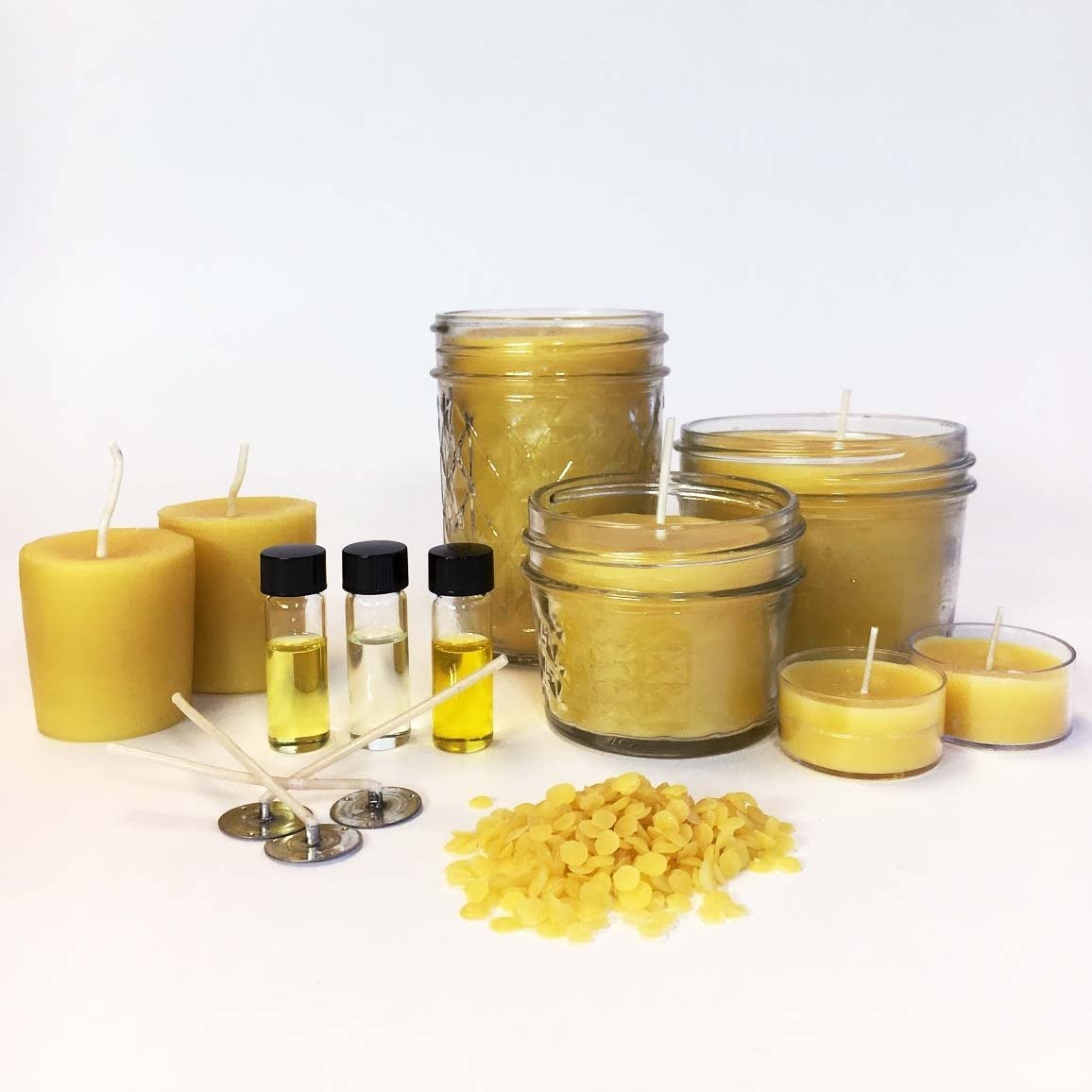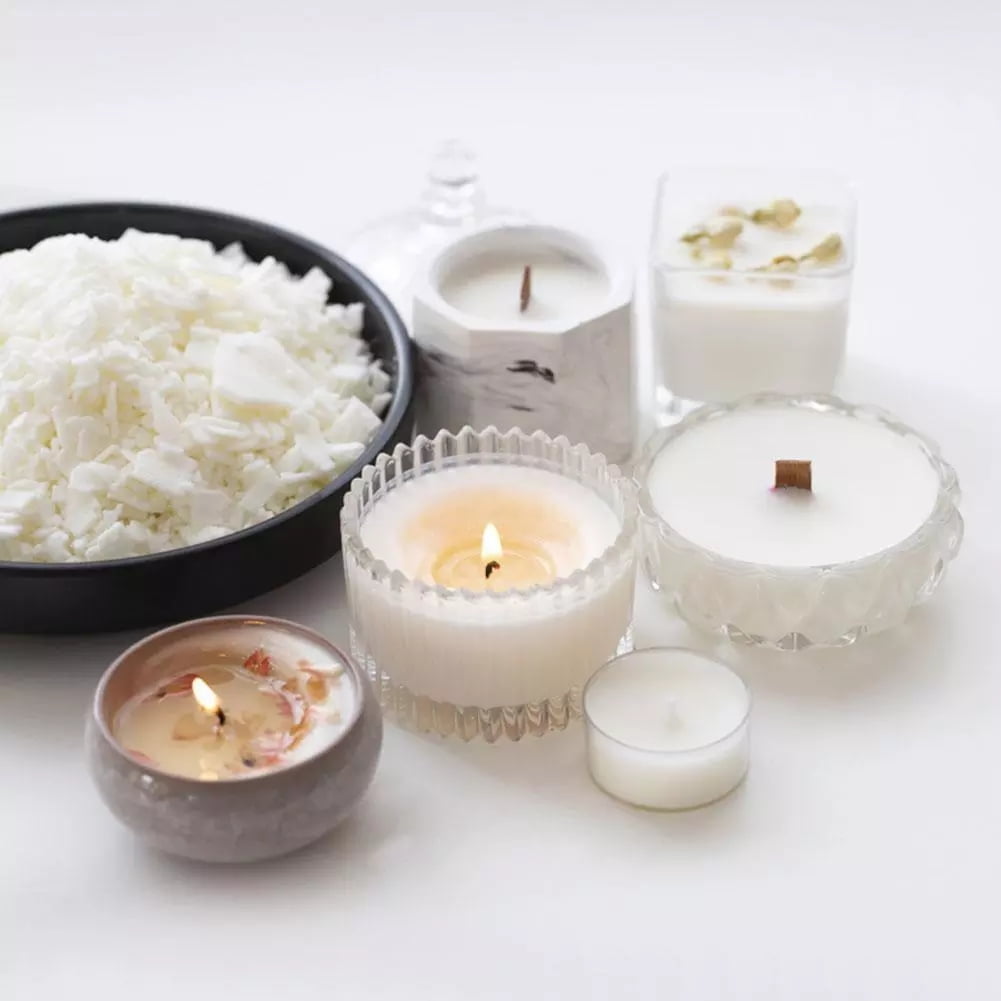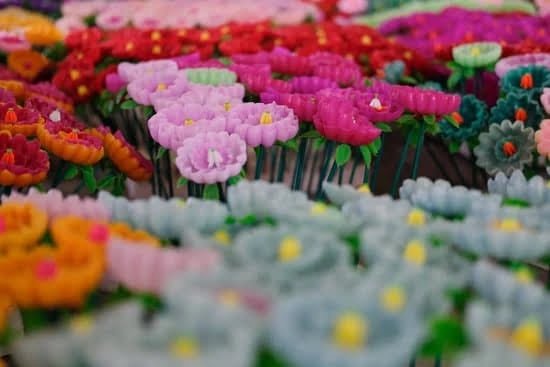Are you a candle making enthusiast looking to enhance your craft with essential oils? If so, you may be wondering, “candle making how much essential oil should I use?” Essential oils can add a delightful fragrance to your candles, but it’s important to understand how to measure and use them effectively.
In this article, we will explore the ins and outs of incorporating essential oils into your candle making process. From understanding how essential oils work in candle making to calculating the right amount for your candles, we’ve got you covered.
Candle making is an art form that allows crafters to create unique and personalized products. Essential oils are often used to add aroma and therapeutic benefits to candles. Before delving into the details of measuring essential oils for candle making, it’s crucial to understand how these oils work in the process. By grasping the science behind essential oils in candle making, crafters can make informed decisions about their usage.
When it comes to incorporating essential oils into candle making, precision is key. Measuring the right amount of essential oil not only ensures that your candles have a pleasant fragrance but also plays a role in safety and overall quality.
Factors such as the type of wax used, the size of the candle, and personal preference all come into play when determining the appropriate amount of essential oil to use. In the following sections, we will delve deeper into these considerations and provide a step-by-step guide for calculating the right amount of essential oil for your candles.
Understanding Essential Oils
Essential oils play a crucial role in candle making, adding fragrance and therapeutic benefits to the finished product. When heated, essential oils release their aromatic compounds, filling the room with pleasant scents and potentially providing a range of emotional and physical benefits. Understanding how essential oils work in candle making is essential for achieving the desired results.
One important aspect to consider is that not all essential oils behave the same way when added to candles. Some oils have a lower flashpoint, meaning they evaporate at a lower temperature and may not hold up well in the hot wax.
On the other hand, some essential oils can overpower the natural scent of the wax, leading to an unbalanced fragrance profile in the final product. It’s important to choose your essential oils wisely based on their individual characteristics and how they will interact with the candle-making process.
Factors such as the type of wax used, the size of the candle, and personal preference all play a role in determining how much essential oil should be used in candle making. The purity and potency of the essential oil also factor into this determination.
Without proper measurement and understanding of these factors, you may end up with candles that are either too weak or too overpowering in fragrance. It’s crucial to measure your essential oils accurately to achieve a balanced and enjoyable scent in your candles.
- Choose high-quality, pure essential oils for best results
- Consider how different types of wax interact with various essential oils
- Measure your essential oils carefully for a balanced fragrance profile
Importance of Measuring Essential Oils in Candle Making
When it comes to candle making, using essential oils can add a beautiful aroma to your creations. However, it’s crucial to measure the essential oils accurately to achieve the desired scent and ensure safety in your candle-making process.
Enhancing Aromatherapy Benefits
Essential oils are known for their therapeutic properties, and when used in candles, they can create a relaxing atmosphere. By measuring the essential oils properly, you can maximize the aromatherapy benefits of the candles. Whether you want to promote relaxation, uplift the mood, or create a refreshing ambiance, measuring the right amount of essential oil is key to achieving these effects.
Maintaining Safety
In candle making, safety should always be a top priority. Using too much essential oil in your candles can lead to overpowering scents and potential hazards. Essential oils are highly concentrated substances that can cause skin irritation or allergic reactions if not used properly. By measuring the essential oils accurately, you can ensure that your candles are safe for use and enjoyable without being overwhelming.
Preserving Quality
Measuring essential oils in candle making also helps preserve the quality of your final product. Using an excessive amount of essential oil can affect the consistency and burn time of the candles. Additionally, it can result in an uneven distribution of fragrance throughout the candle. By measuring the essential oils carefully, you can maintain consistency in scent and overall quality across all of your candles.
Factors to Consider When Determining the Amount of Essential Oil to Use
When it comes to determining the amount of essential oil to use in candle making, there are several factors that need to be carefully considered. Not only does the amount of oil used affect the fragrance strength of the candle, but it also impacts the overall quality and burn time of the candle. Here are some key factors to consider when determining how much essential oil to use in your candle making process:
- The type of wax being used: Different waxes have different absorption rates, meaning that they will hold onto essential oils at different capacities. For example, soy wax typically requires a higher percentage of fragrance oil compared to paraffin wax.
- The size and type of the candle: The size and shape of the candle vessel also play a role in determining how much essential oil should be used. Larger candles will naturally require more fragrance oil, while smaller candles will need a lower percentage.
- The specific scent being used: Some essential oils have stronger fragrances than others, so the type of scent being used will impact how much should be added to achieve the desired level of aroma.
Taking these factors into consideration is crucial for achieving consistent and high-quality results in your candle making endeavors. It’s important to remember that there isn’t a one-size-fits-all approach when it comes to adding essential oils to candles, as each batch may require a different amount based on these variables. Experimentation and careful calculation are key in finding the perfect balance for your unique candle making process.
Ultimately, understanding these factors will help you determine not only how much essential oil to use but also how to achieve an optimal scent throw and burn performance in your candles. By carefully considering these variables, you can ensure that your candles are not only beautifully fragrant but also safe and long-lasting for your customers to enjoy.
Step-by-Step Guide
When it comes to candle making, the amount of essential oil you use is crucial in achieving the perfect scent for your candles. The right balance of essential oils can make all the difference in creating a high-quality, fragrant candle. In this section, we will provide a step-by-step guide on how to calculate the right amount of essential oil for your candles.
First and foremost, it’s important to understand that the amount of essential oil needed will depend on the type of wax you are using, as well as the size and type of candle you are making. Generally, a good rule of thumb is to use about 1 ounce of fragrance oil for every pound of wax. However, when using essential oils, which are more concentrated than fragrance oils, a lower amount is often required.
To calculate the exact amount of essential oil needed for your candles, you will need to consider the type of essential oil being used and its recommended usage rate. Most essential oil suppliers provide guidelines on how much oil to use per pound of wax. It’s important to follow these guidelines closely to ensure that your candles have a pleasant scent without being overpowering.
In addition to the type and concentration of essential oil being used, factors such as personal preference and the desired strength of the scent should also be taken into account when calculating the amount of essential oil for your candles. Keep in mind that it’s always better to start with a smaller amount and gradually increase as needed, rather than adding too much oil at once and risking an overwhelming scent.
| Factor | Description |
|---|---|
| Type of Wax | Different waxes may require different amounts of essential oils. |
| Type and Concentration | Consideration towards varying strengths depending on supplier recommendations. |
| Personal Preference | The intended strength or potency based on personal taste should also be taken into consideration when calculating. |
Tips and Tricks for Using Essential Oils in Candle Making
When it comes to using essential oils in candle making, there are a few tips and tricks that can help you achieve the perfect balance of fragrance in your candles. One important tip is to always use high-quality essential oils, as they will produce a stronger and longer-lasting scent in your candles. Look for essential oils that are specifically designed for candle making, as these are often more concentrated and better suited for this purpose.
Another tip is to consider the type of wax you are using when adding essential oils to your candles. Soy wax tends to hold scent better than paraffin wax, so you may need to use less essential oil when making soy candles. Be sure to also consider the size and type of candle you are making, as larger or thicker candles may require more essential oil to achieve the desired fragrance strength.
It’s also important to take into account the specific scent you are using when determining how much essential oil to add to your candles. Some scents, such as citrus or mint, tend to be stronger than others and may require less oil, while subtle scents like lavender or vanilla may require a bit more.
Always start with a smaller amount of oil and add more as needed, keeping in mind that it’s easier to add more oil than it is to fix an overly fragrant candle.
Finally, don’t be afraid to get creative with your scent combinations. Mixing different essential oils can create unique and captivating fragrances for your candles. Just be sure to test your combinations in small batches before making larger quantities. With these tips in mind, you’ll be well on your way to mastering the art of using essential oils in candle making.
| Tips and Tricks | Using Essential Oils |
|---|---|
| Use high-quality essential oils | Consider soy wax vs paraffin wax |
| Take into account specific scents being used | Get creative with scent combinations |
Common Mistakes to Avoid When Adding Essential Oils to Candles
When it comes to adding essential oils to candles, there are some common mistakes that beginners often make. Avoiding these pitfalls can ensure that you achieve the perfect balance of fragrance in your candles without any unwanted side effects.
Using Too Much Essential Oil
One of the biggest mistakes in candle making is using too much essential oil. It can be tempting to add extra drops for a stronger scent, but this can actually lead to problems such as poor burning, smoking, and even potential safety hazards. Overly fragrant candles can also cause headaches and other health issues for those with sensitivities. It’s important to follow recommended guidelines for the amount of essential oil to use in your candle making.
Not Mixing the Essential Oil Properly
Another common mistake is not mixing the essential oil thoroughly into the candle wax. This can result in uneven distribution of the fragrance, with some parts of the candle being overpowering while others lack scent entirely. To avoid this issue, ensure that you stir the essential oil into the wax thoroughly and evenly before pouring it into your candle mold.
Using Low-Quality Essential Oils
Using low-quality or synthetic essential oils can also lead to undesirable results in your candles. These oils may not blend well with the wax, may produce a subpar scent, or may even emit toxins when burned. It’s crucial to invest in high-quality, pure essential oils from reputable sources for the best results in your candle making.
By avoiding these common mistakes, you can ensure that your candle making process goes smoothly and results in beautifully fragrant and safe candles that everyone will enjoy.
Conclusion
In conclusion, the art of candle making with essential oils is a delicate and precise process that requires careful consideration and measurement. Understanding how essential oils work in candle making is essential to creating high-quality, fragrant candles. It’s important to remember that the amount of essential oil used in candle making is crucial to achieving the perfect balance of scent without compromising the quality of the candle.
When determining the amount of essential oil to use in your candles, there are several factors to consider, such as the type of wax being used, the size of the candle, and the desired level of fragrance. By following a step-by-step guide for calculating the right amount of essential oil, you can ensure that your candles have a consistent and pleasant scent.
Additionally, it’s important to keep in mind some tips and tricks for using essential oils in candle making, such as testing different ratios and keeping track of your measurements. Avoiding common mistakes when adding essential oils to your candles will also help you achieve a successful outcome.
Finding the perfect balance of essential oils in your candle making process will ultimately result in beautiful and aromatic candles that are sure to delight your senses. Whether you are a beginner or an experienced chandler, mastering the art of using essential oils in candle making will elevate your craft and bring joy to those who enjoy your creations.
Frequently Asked Questions
How Do You Calculate Essential Oil for Candles?
To calculate the amount of essential oil for candles, you need to consider the wax weight of the candle. The generally recommended usage rate is 6-10% fragrance oil per pound of wax. So, for example, if you have 1 pound of wax, you would use between 0.96 – 1.6 ounces of essential oil.
What Is the Ratio of Fragrance Oil to Candles?
The typical ratio of fragrance oil to candles is about 6-10% fragrance oil per pound of wax. This means that for every pound of wax, you would use between 0.96 – 1.6 ounces of fragrance oil. It’s important to follow this ratio to ensure a good scent throw in your candles.
How Many Drops of Essential Oil for 4 Oz Candle?
When making a 4 oz candle, the number of drops of essential oil needed will depend on the specific requirements and concentration of the essential oil being used. A general guideline is to use about 1 ounce of fragrance oil per 1 pound of wax, which translates to around 24-40 drops for a 4 oz candle, depending on the strength you desire.
Always refer to specific guidelines for each essential oil and adjust according to your preference and strength desired in your candles.

Welcome to my candle making blog! In this blog, I will be sharing my tips and tricks for making candles. I will also be sharing some of my favorite recipes.





